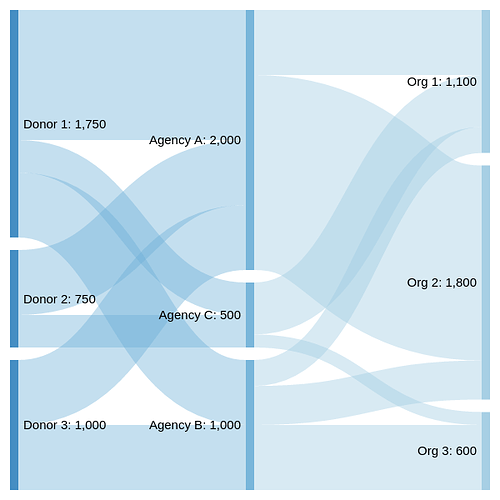Hi everyone
I’ve recently been working with UN-Habitat to investigate traceability: how we can link/connect different activities together.
There seems to be a growing community of people interested in this - including @pelleaardema @Herman and the team at the Dutch MFA (their guidelines are very useful), @rolfkleef (really interesting post on org structures) and @SJohns (fusion tables network diagrams)
@system Admin - could we have a new dedicated category for traceability, maybe?
My question here is what shared understanding or experience we might have in terms of how traceability might “look”. If we tour around the uses of IATI thus far, there are plenty of maps, graphs and aggregations - most often centred on a single publisher (or all publishers, but aggregations around sectors or countries). As far as I know, we haven’t anything out there to illustrate what traceability between publishers would be/mean…
Network diagrams might be one tactic - as could a Sankey diagram:
(made with Sankeymatic)
But - maybe we haven’t a clear idea, or full discussion, around what we are trying to do? Is it best to consider why we want traceability before rushing to the tools?
Hopefully others in the community can discuss. Apologies for the open end / vague nature of the post - I’ve been looking at network diagrams for far too long!



